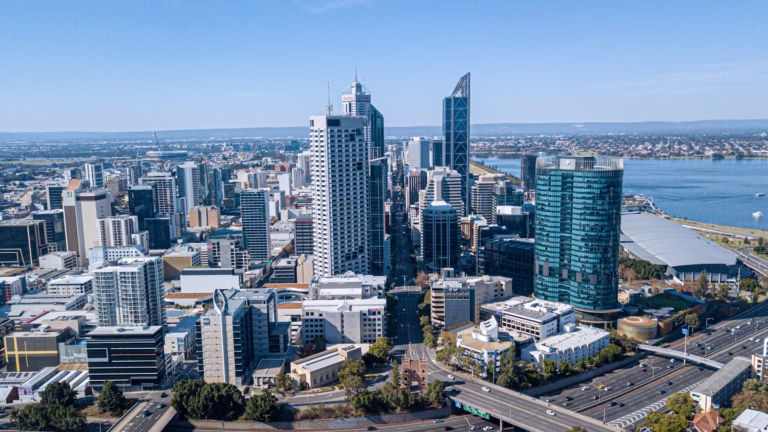In our increasingly interconnected world, the smooth functioning of essential services and systems is vital to the safety, security, and economic stability of societies. These essential services—such as energy supply, transportation systems, telecommunications, and water infrastructure—are part of what is known as critical infrastructure.
Protecting these systems from threats and disruptions is crucial to maintaining a nation’s safety and wellbeing. This is where critical infrastructure protection (CIP) comes into play.
At Smartsec Security Solutions, we understand the importance of critical infrastructure protection and how securing these essential systems can prevent disruptions, economic losses, and security threats. In this article, we will answer the question “what is critical infrastructure protection”, explain its importance, and explore how effective protection strategies are essential for governments, industries, and communities alike.
What Is Critical Infrastructure Protection?
Critical infrastructure protection (CIP) refers to the safeguarding of essential systems and assets that are vital to a nation’s security, economy, public health, and safety.
These infrastructures include the physical and digital networks and services that we rely on daily, such as:
- Energy systems: Power plants, electrical grids, and gas pipelines
- Water supply: Water treatment plants and distribution systems
- Telecommunications: Internet, phone lines, and emergency communication systems
- Transportation: Airports, roads, railways, and shipping ports
- Financial systems: Banking networks and stock exchanges
- Healthcare facilities: Hospitals, clinics, and public health systems
The goal of critical infrastructure protection is to ensure that these systems are secure, resilient, and capable of withstanding both physical and cyber threats. CIP involves identifying potential vulnerabilities, assessing risks, and implementing measures to protect infrastructure from natural disasters, terrorist attacks, cyberattacks, and other man-made or accidental disruptions.
Why Is Critical Infrastructure Protection Important?
Critical infrastructure protection is crucial because society relies heavily on the uninterrupted operation of essential services.
Disruptions to these infrastructures can lead to severe consequences, including loss of life, economic downturns, and threats to national security.
The importance of CIP can be broken down into several key factors:
1. Protecting Public Safety and Health
Critical infrastructures, such as water supplies, healthcare systems, and emergency services, directly impact public safety and health. A failure in these systems could lead to dangerous shortages of clean water, delayed emergency medical responses, or even widespread disease outbreaks. Critical infrastructure protection ensures that these systems remain functional, even during a crisis.
2. Ensuring Economic Stability
Disruptions to energy supplies, transportation networks, or financial systems can have devastating economic consequences. For example, if a cyberattack were to take down a major power grid or disrupt online banking systems, the resulting downtime could lead to significant financial losses for businesses and governments alike. CIP helps ensure that essential economic systems continue functioning, even in the face of threats or emergencies.
3. Safeguarding National Security
Many critical infrastructures are integral to a nation’s defence and national security. Telecommunications networks, for example, support military communications and intelligence services. Similarly, energy and transportation infrastructures are necessary for deploying defence resources in times of crisis. Protecting these infrastructures from sabotage, terrorism, or espionage is essential for maintaining national security.
4. Mitigating the Impact of Natural Disasters
Natural disasters such as floods, hurricanes, wildfires, or earthquakes can severely damage critical infrastructures, leaving communities vulnerable and causing widespread disruption. Critical infrastructure protection involves preparing for these events by implementing resilient designs, emergency response plans, and backup systems that ensure essential services can continue operating even in the wake of a disaster.
5. Defending Against Cyber Threats
With the increasing reliance on digital technologies, cyberattacks have become one of the greatest threats to critical infrastructure. Hackers, whether state-sponsored or independent, can target power grids, water systems, or financial institutions, causing widespread chaos. Critical infrastructure protection includes strengthening cybersecurity measures to prevent unauthorised access and defend against cyberattacks that could compromise essential systems.
Key Elements of Critical Infrastructure Protection
Effective critical infrastructure protection requires a multi-faceted approach that involves collaboration between governments, private sector companies, and security professionals. Here are some of the key elements of an effective CIP strategy:
1. Risk Assessment and Vulnerability Analysis
The first step in critical infrastructure protection is identifying the potential risks and vulnerabilities associated with each system. This process involves evaluating the infrastructure for both physical and cyber threats, determining the likelihood of those threats occurring, and assessing the potential impact of a disruption.
Regular risk assessments allow governments and businesses to identify weak points in their infrastructure and address those vulnerabilities before an incident occurs.
2. Implementing Protective Measures
Once vulnerabilities are identified, critical infrastructure protection involves implementing protective measures to strengthen and safeguard these systems. These measures can include:
- Physical security: Adding barriers, surveillance, and access control systems to prevent unauthorised access or sabotage
- Cybersecurity: Strengthening firewalls, encryption, and other digital defences to protect against hacking and malware
- Redundancy systems: Creating backup systems or alternative routes to ensure continuity if the primary system fails
- Employee training: Ensuring that workers understand how to respond to security threats, implement safety protocols, and identify suspicious activity
3. Collaboration Between Public and Private Sectors
Most critical infrastructures are owned and operated by private companies, making collaboration between governments and businesses essential for effective critical infrastructure protection. This collaboration often includes sharing information on potential threats, aligning security protocols, and coordinating response efforts in the event of an attack or disaster.
4. Crisis Management and Emergency Response
A crucial part of critical infrastructure protection is having an emergency response plan in place for incidents like natural disasters, cyberattacks, or terrorist threats. These plans ensure that key stakeholders know how to respond, communicate, and restore services in the event of an emergency.
Having clear procedures for disaster recovery and crisis management helps minimise the impact of an infrastructure failure and enables quicker recovery.
5. Continuous Monitoring and Threat Intelligence
Threats to critical infrastructure are constantly evolving, so critical infrastructure protection requires continuous monitoring of systems to detect any suspicious activity or anomalies. This involves the use of advanced technology to monitor networks, identify potential cyber threats, and track physical access to key infrastructure sites.
Additionally, staying updated on the latest threat intelligence ensures that security measures are always one step ahead of emerging threats.
How Smartsec Security Solutions Can Help
At Smartsec Security Solutions, we understand the importance of safeguarding critical infrastructure to maintain the security, stability, and resilience of essential services.
We offer independent critical infrastructure protection consulting services that are tailored to meet the unique needs of businesses, government agencies, and industries in Western Australia.
Why Choose Smartsec Security Solutions?
- Independent Expertise: We provide unbiased advice on protecting critical infrastructures without promoting specific products or services.
- Comprehensive Risk Assessments: We conduct thorough assessments to identify vulnerabilities and develop strategies to mitigate risks, whether physical or cyber-related.
- Tailored Solutions: Every infrastructure is different, and we provide customised solutions based on the unique challenges of your organisation.
- Ongoing Support: Our services include regular security audits, continuous monitoring, and crisis management planning to ensure your infrastructure remains secure.
To learn more about how we can assist with critical infrastructure protection, visit our services page or contact us for a consultation.
Conclusion
Critical infrastructure protection is a vital component of national security, public safety, and economic stability. From energy systems to telecommunications networks, these infrastructures must be safeguarded against a wide range of physical and cyber threats.
A comprehensive approach to critical infrastructure protection ensures that essential services continue to function, even in the face of natural disasters, terrorism, or cyberattacks.
At Smartsec Security Solutions, we specialise in providing independent, expert advice on how to protect critical infrastructures and ensure their resilience in an ever-changing threat landscape. For more information or to schedule a consultation, visit our services page.



